22min Reading time
The vision of a (new) digital future

The idea of merging the real and digital worlds has been around for a relatively long time. In fact, it’s almost as old as the first version of the Internet itself, which emerged in the early 1990s. Science fiction writers such as Neil Stephenson’s imagined a reality in which we live increasingly overlapping digital and offline lives in novels such as Snow Crash (1992). Science fiction writers regularly over the last 30 years described a vision of 3D spaces where people interact, trade, spend leisure time, work, and create digital assets. In the early 2000s, there was “Second Life,” a video game commonly dubbed an early Metaverse that seemed to implement these ideas. At the time, however, many of the technologies that are relevant to today’s notion of the Metaverse did not exist. With further technological innovation, we are approaching the point where many of the visions of science fiction writers will become reality.
A real hype has arisen recently around buzzwords such as Metaverse, Web 3.0, NFT, virtual reality, blockchain and decentralized finance (DeFi). Numerous large companies such as Nike, Adidas, or J.P. Morgan have jumped on the bandwagon and launched their NFT collections or set up representative offices in virtual worlds. Maybe you’ve already experienced the virtual spaces of one of the current metaverses like Decentraland or The Sandbox or bought cryptocurrencies or NFTs yourself. And if not, you’ve come to the right place: with this article, we’ll give you an overview of the most important technologies of the future and how they relate to each other. We also show how they will influence your daily and digital life and where exactly the Metaverse will be located between all these technologies.
Web 3.0 - a new technological revolution?
The Internet has been around for about 30 years and continues to evolve. During this development, a “new” iteration of the Internet has emerged every 10-15 years so far. The current version is called Web 2.0 and includes some of the most well-known tech companies of our time, such as Meta, Twitter, YouTube or Netflix.
Before we go into more detail about Web2.0, we first need to take a look back. More precisely, by about 30 years because that was when the Internet was born with Web 1.0, the earliest version of the Internet. It emerged from the U.S. Defense Research Projects Agency (DARPA) and soon developed into a global digital communications system. At first, it was intended for military and research purposes, but shortly thereafter it was used for commercial purposes as well. Web 1.0 was largely a “read-only” web, where users were passive readers and consumers of information. The ability to interact with web pages or other users did not exist. Thanks to Wayback Machines, we can still see and experience this first version of the Internet today.
In the next stage of development of the Internet (Web 2.0), the interaction of users with websites and other users became more important. This was also the birth of social platforms and media such as Facebook, Twitter, etc. A major criticism of Web2.0 is that central providers (such as Google) act as middlemen between the users, have great power and collect vast amounts of data – often without the knowledge of the users. Web3.0 and the movement behind it emerged in part from criticism of today’s version of the Internet and aims to strengthen users’ data sovereignty, make information more private and decentralized, and reduce dependence on centralized companies.
The foundation for the third era of the web, known as Web3.0, is the emergence of blockchain technologies. It enables the transfer not only of intellectual value, but also of monetary value and digital property. Sometimes people equate the terms “blockchain” and “cryptocurrency” and think they are the same thing. Howeverthis doesn’t seem right. Blockchain is the underlying foundation technology on which cryptocurrencies and Web 3.0 are built. Blockchain technologies enable the creation of decentralized networks without centralized control points. Blockchain is designed to allow us to operate on a decentralized system without the need for middlemen to coordinate between nodes on the network. The secure transfer of information, assets, or currencies is guaranteed by the Blockchain, entirely without having a third party (such as digital companies, banks, or other financial institutions) between the parties involved. This is the main difference between Web 2.0 and Web 3.0 (at least in theory, to some extent there are centralized tendencies even in Blockchain projects, depending on who “owns” the Blockchain).
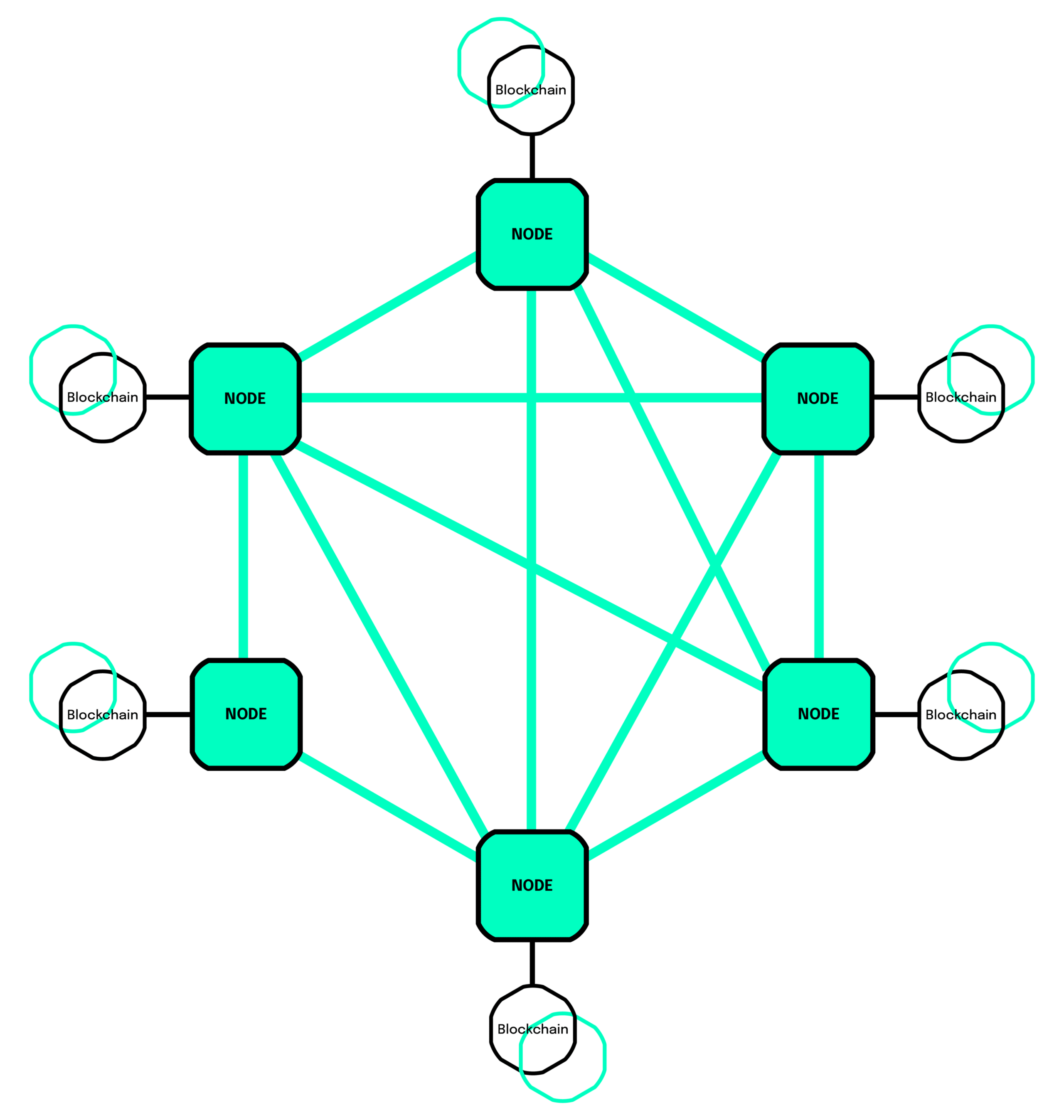
Web 3.0 has two distinctive characteristics, and these characteristics can be seen as building blocks for the future of the Web and Web components:
- Decentral: With Web 3.0, information can be stored in multiple locations simultaneously and thus decentralized. This would give more control back to users, away from “companys-in-the-middle” like Google or Meta. With Web 3.0, data and content generated by powerful computers is sold by users over decentralized data networks. This ensures permanent ownership and secure transfer of ownership.
- Trustless and without permission: An implicit agreement in the Web 3.0 community is that software is open source and can be used to improve existing components. In this way, Web 3.0 enables constant improvements and direct interaction between the participants. In blockchain-based protocols, there is no longer a need for a trusted intermediary, as smart contracts can ensure the ongoing security of interactions and trades.
So what does Web3.0 hold for us as the future of the Internet? It has the potential to integrate various technologies and increase their disruptive potential: Cloud Computing, Big Data, the Internet of Things, social networks, cybersecurity, and existing features of Web 2.0, all of which could operate in an automated way based on a decentralized peer-to-peer network. Taking the example of initial projects in government services, e-banking, decentralized financial markets, transactions and virtual reality games, we can already see the first forms of Web 3.0. We can therefore look forward to a major digital transformation. The way we think about, interact with, and elaborate on the Internet is also very likely to change in the future.
Nevertheless, we intend to note a few points briefly here that speak against a complete realization of a decentralized Web 3.0. As of today, we still see a blending of the core features of Web 2.0 with those of Web 3.0, and rudiments of centrality are still evident. Large companies continue to have a lot of influence on Web 3.0-based technologies, the decentralized cryptocurrencies and NFTs are traded on centralized marketplaces such as OpenSea, With the development of Web 3.0, some key companies are also emerging that ultimately strongly influence markets and digital developments (such as MetaMask, Infura or Alchemy). In the upcoming years, we will be talking about a Web 2.5 rather than a Web 3.0 in some places.
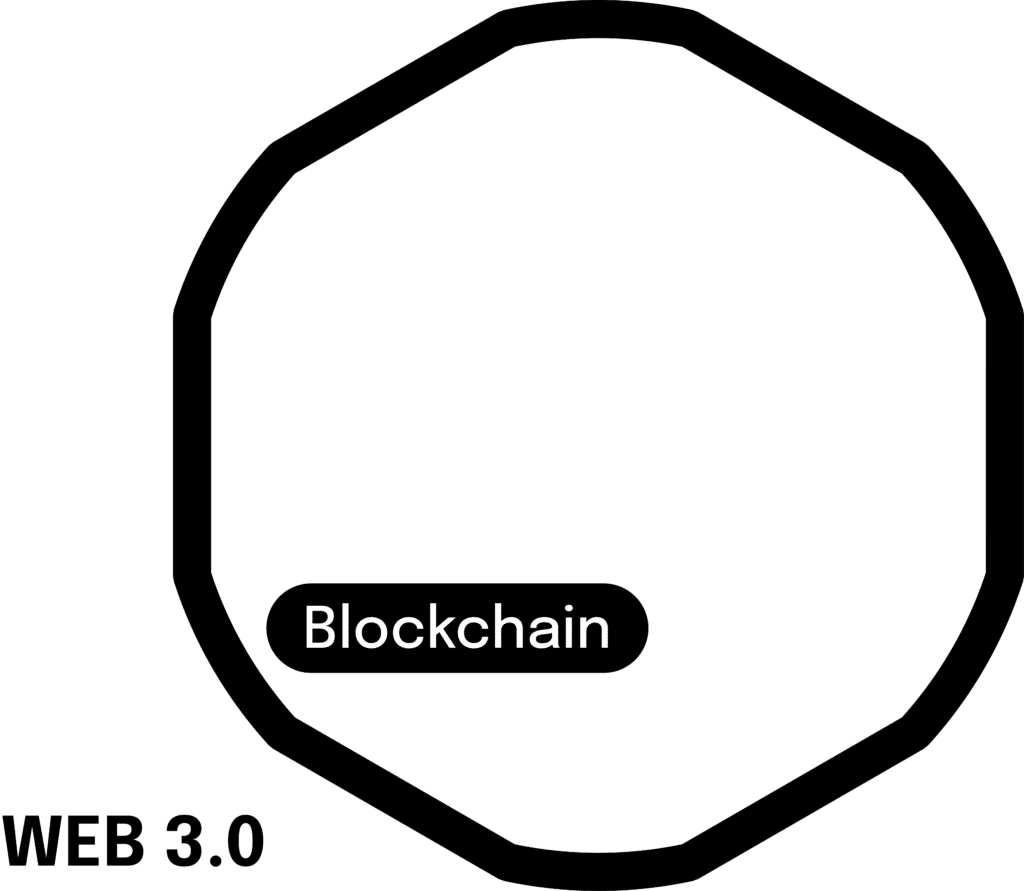
Significance of the DeFi ecosystems in Web 3.0
Currently, we only know a centralized financial system. In a centralized financial system, a few players control most of the world’s wealth. This lack of decentralization can lead to economic instability and inequality. Decentralized Finance (DeFi) is an attempt to create a more equitable financial system by moving away from centralized institutions and emerged as an idea through the introduction of Bitcoin.
The development of blockchain with smart contracts built on top of it is a breakthrough technology in front of this context. It has the potential to fundamentally change our financial systems. Here, the blockchain also acts as a backbone infrastructure for the execution of smart contracts. These are decentralized applications, in simple terms they are computer programs that are executed automatically by the participants in the blockchain when certain terms or conditions are met. DeFi builds on the blockchain and uses these smart contracts to automate financial tasks. Smart contracts running on public blockchains like Ethereum are a critical component of DeFi. Smart contracts autonomously perform a series of predetermined actions, generally according to the terms of an agreement, without the need for intermediaries. Once deployed, these smart contracts are immutable. The source code and transactions facilitated by the smart contract are recorded in the blockchain for anyone to view. The idea of smart contracts dates back to a 1996 article by Nick Szabo, in which he described the potential of these smart contracts and automated protocols.
DeFi has the potential to revolutionize the way we think about finance and the financial industry. For example, DeFi could lead to greater stability as well as equality and help promote economic growth. Imagine, for example, a developing country where people have no or difficult access to the centralized banking system. However, in most cases, they have access to a smartphone and the Internet. In a decentralized financial system, all people, even without access to a bank account, could participate in monetary transactions in the form of peer-to-peer payments. This would promote economic growth and equality among social groups in these countries. In a decentralized financial system, the potential user base is much larger than in a system that requires banks. Another advantage of DeFi can be seen in the facilitated transfer of money across national borders. This is particularly relevant for people who work as expats and send money to relatives back home. In the traditional financial system, middlemen always retain a portion of the transferred sum as a fee, which does not exist in a decentralized financial system.
Even though DeFi is still in an early stage of development, there are already some applications in daily life. Some of the more well-known DeFi use cases include decentralized exchanges, stablecoins like Tether, and lending platforms. DeFi has already begun to gain momentum and influence, and this trend is likely to become more pronounced in the future. This technological advancement will potentially not only fundamentally change the way the financial industry operates, but also has additional benefits for all end-users of financial instruments and everyday tech devices.
The development of DeFi is closely tied to the development of Web 3.0 and the Metaverse. For the Metaverse to take hold, users must have access to decentralized tokens, for which DeFi must in turn be established as the foundation. With the growth of Decentralized Finance, there is also a major benefit for user:ins who are still unsure about the security and transparency of financial interactions in the Metaverse. One of the main features of blockchain is that they are transparent and immutable systems. This means that all transactions on a blockchain are publicly viewable and cannot be manipulated. This transparency and accountability would greatly improve people’s trust in the decentralized financial system and, conversely, in the Metaverse. More about the Metaverse, what it is, how it works and what this innovation means for you will follow later.
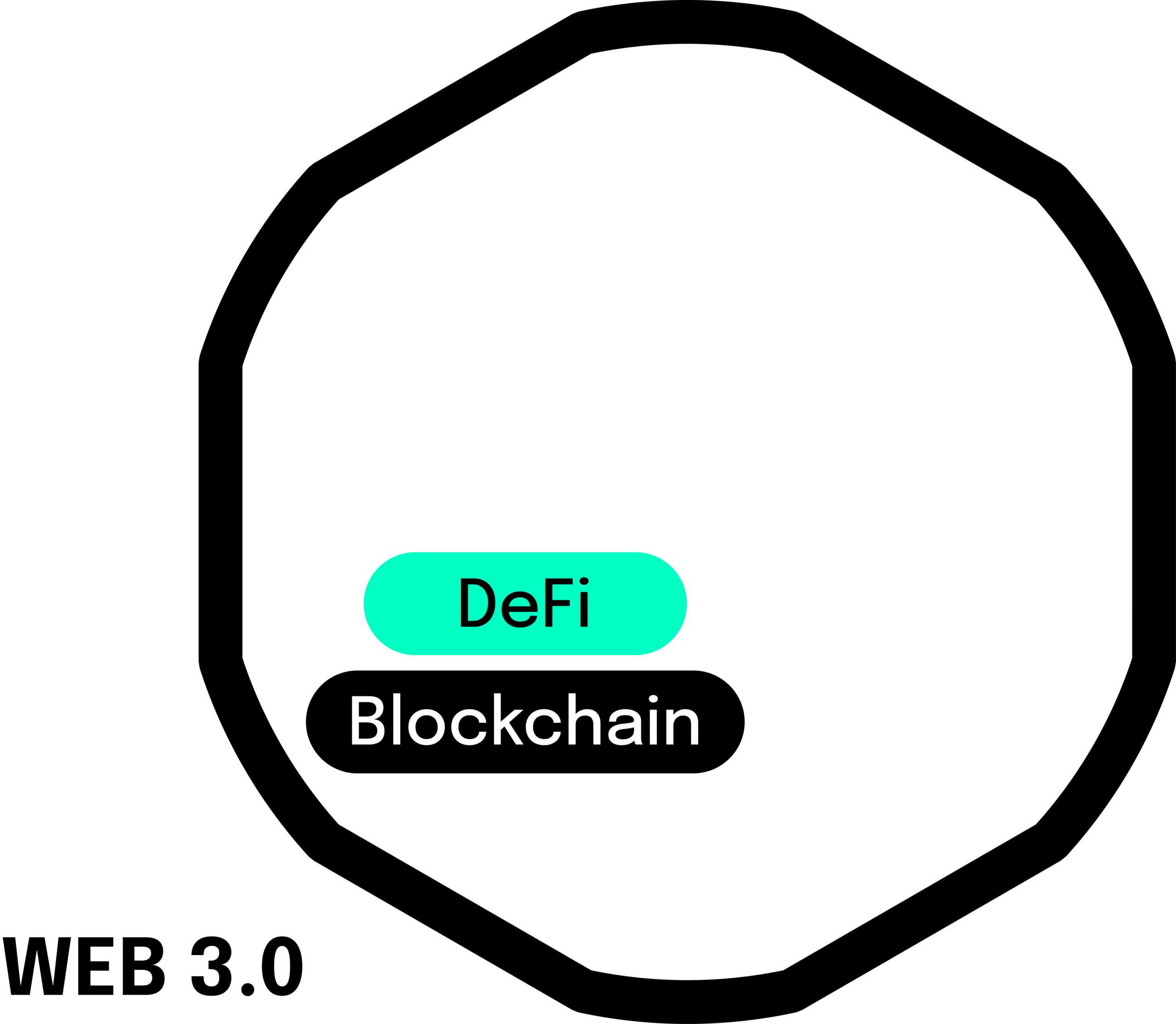
NFTs - more than just a Digital Certification of Ownership
In Web 3.0, anyone can create content, own it, control it, and monetize it. The basis for this is, as mentioned, blockchain, DeFi and cryptocurrencies as a means of exchange. Another technology that has received a lot of hype in recent months is so-called NFTs (Non-fungible Tokens). NFTs are digital assets and represent a novelty in that, as digital certificates of authenticity, they make ownership on the Internet clearly assignable and verifiable for the first time.
We are already somewhat accustomed to the fact that high prices are called for works of art at auctions held by the major auction houses. That’s why the sale of a work of art at Christie’s for 69 million dollars is normally more of a marginal note. About a year ago, however, the auction of a work of art for the aforementioned price caused quite a stir. The artwork, called “Everydays: The First 5000 Days,” was sold as an NFT, meaning it doesn’t exist in physical form, but exclusively digitally.
NFTs are fundamentally changing the way we look at the digital asset market. Before NFTs gained acceptance and popularity, there was little or no way to determine the true owner of a digital asset. Basically, anyone could CTRL+C copy an image or similar and have an identical asset on their desktop. NFTs create clear ownership rights on the Internet and have subsequently given rise to a new investment class as well as new markets. Only with clear ownership and transfer of title can a market for goods develop in the first place. As the name “non-fungible token” suggests, each NFT is a unique, immutable digital object. NFTs are cryptographic assets stored on a blockchain (e.g., Ethereum or Polygon) that provide proof of ownership.
But NFTs are not simply digital art or digital assets. It is quite possible to extend their purpose over time or to provide the owners with direct added value in the offline world. The owner:in of a particular NFT is often granted access to certain activities or events, such as NFT-based membership cards, tickets to concerts, digital product passes, vouchers to purchase exclusive items, etc. However, the connection between NFTs and their use in the offline world is still in its infancy. In digital spaces, they are slowly entering the mainstream. NFTs are particularly popular in virtual worlds like Fortnite, Roblox, The Sandbox, or Decentraland, where they are used to dressing avatars. In some Metaverse games, NFTs additionally provide access to special objects, so you can master digital tasks. Companies such as Nike and About You with its Hypewear brand are also designing NFT fashion for use in digital worlds. In addition, NFTs have become a status symbol, so to speak. On Twitter, for example, many celebrities such as Justin Bieber, Eminem, etc. use their NFTs as profile pictures to signify that they belong to a certain community. Instagram has also recently announced that NFTs will become part of the app.
What also takes on an important function in the Web3 and NFT universe are active communities around specific NFTs. Mostly, the exchange about them takes place on Discord channels. Before the drop (start) of a concrete NFT project, it is tried to ignite a big hype in these communities. The editors of these NFT projects promise access to a wide range of digital assets, activities, and privileges. One of the best-known examples in this context is Yuga Labs’ Bored Ape Yacht Club (BAYC), which is now sometimes referred to as the Disney of the NFT age. The BAYC is a collection of 10,000 NFT ape images and promises their owners to be members of an exclusive club. This includes access to events, chat rooms, merchandise, or real yachting events. However, unlike many other NFT projects and the real Disney characters, the intellectual property of the Bored Apes belongs to the owner of the respective NFT. So in principle it’s as if I owned Mickey Mouse or Luke Skywalker and could market and use them myself. This is exactly what is already happening with BAYC’s NFTs. The owners developed their own stories around individual monkeys, for example monkey #1798 is called Jenkins and is the gofer aboard BAYC. The owner of Jenkins meanwhile monetizes him through merchandise or appearances in movies, videos, etc. for which he/she receives royalties.
Another project worth mentioning is RTFKT, which was acquired by Nike late last year. Shortly before that, RTFKT had launched CloneX, these comprise a set of 20,000 digitally generated 3D avatars with random features (called skins), i.e. eyes, clothing, mouth parts, etc., that come in varying numbers, making some clones rarer. The project was launched in November 2021 and has already generated over $483,829,102 in transaction volume since then, according to CryptoSlam. Owners of CloneX also regularly receive further digital assets via so-called airdrops, which keep increasing the value of the collection. At the end of April 2022, Nike also released its first NFT sneaker collection (“Cryptokicks”) together with RTFKT. Collections such as BAYC, RTFKT or the CryptoPunks are also referred to as “blue chips” because they have a very high value due to a high demand and are considered relatively stable in value. In some cases, these communities organize themselves into so-called Decentralized Autonomous Organizations (DAO). A DAO is the organizational form of Web 3.0, if you are eager to learn more about it, feel free to listen to our podcast about it!
All this means that as an owner of an NFT you can be a digital investor, member of an association, shareholder of a brand or simply supporter of a digital artist. Projects like Stepn & Axie Infinity, for example, also allow the owners of the respective NFTs to earn money by running or playing video games. The evolution of NFT projects as investments or speculations towards a higher importance of the associated benefits will be interesting to watch.
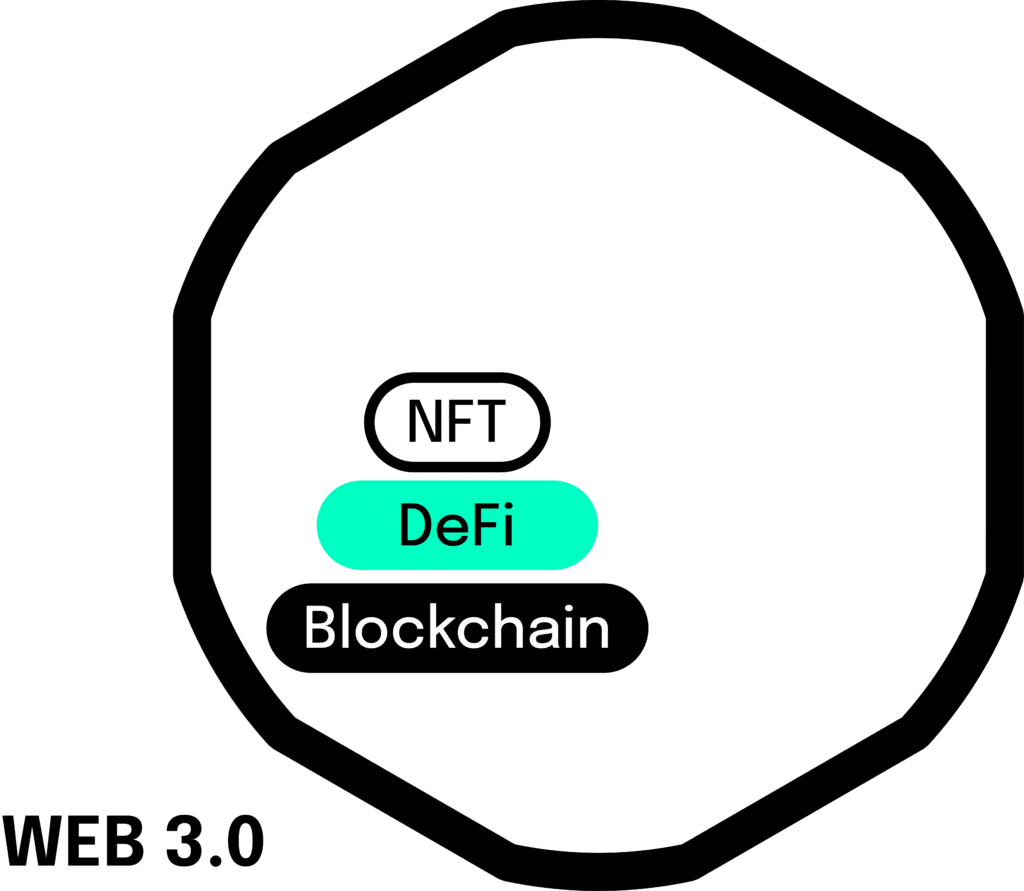
VR and AR as Access to the Metaverse
There is a great debate on the subject of Metaverse as to what the entry point should look like. On the one hand, there are many proponents who argue that access will be possible regardless of the device, via various end devices such as smartphones, game consoles or desktops. At the same time, on the other hand, many experts argue that to merge reality and virtuality, the use of virtual reality and augmented reality is essential. Only in this way would it be possible to fully immerse oneself in the metaverse as the future of the Internet. Virtual reality (VR) makes it possible to experience computer-generated worlds and interact within them. Augmented Reality (AR), on the other hand, describes the integration of digital information into the user’s environment in real time.
VR has been around for several decades. Emerging in the 1960s, the technology did not catch on at first, however, due to its high hardware requirements and lack of application fields. But now, thanks to improvements in hardware and software, the technology is becoming more accessible and affordable. Since 2015, the adaptation of VR has been visibly increasing, especially through its use in video games and entertainment. Oculus’ VR headset, the Oculus Rift, was the first known virtual reality headset and is used, for example, as a learning tool in schools and, in some cases, in manufacturing companies. In 2021, the headset surpassed Xbox console sales for the first time, no doubt due in part to the hype following Facebook’s re-branding, but still an interesting development in its own right.
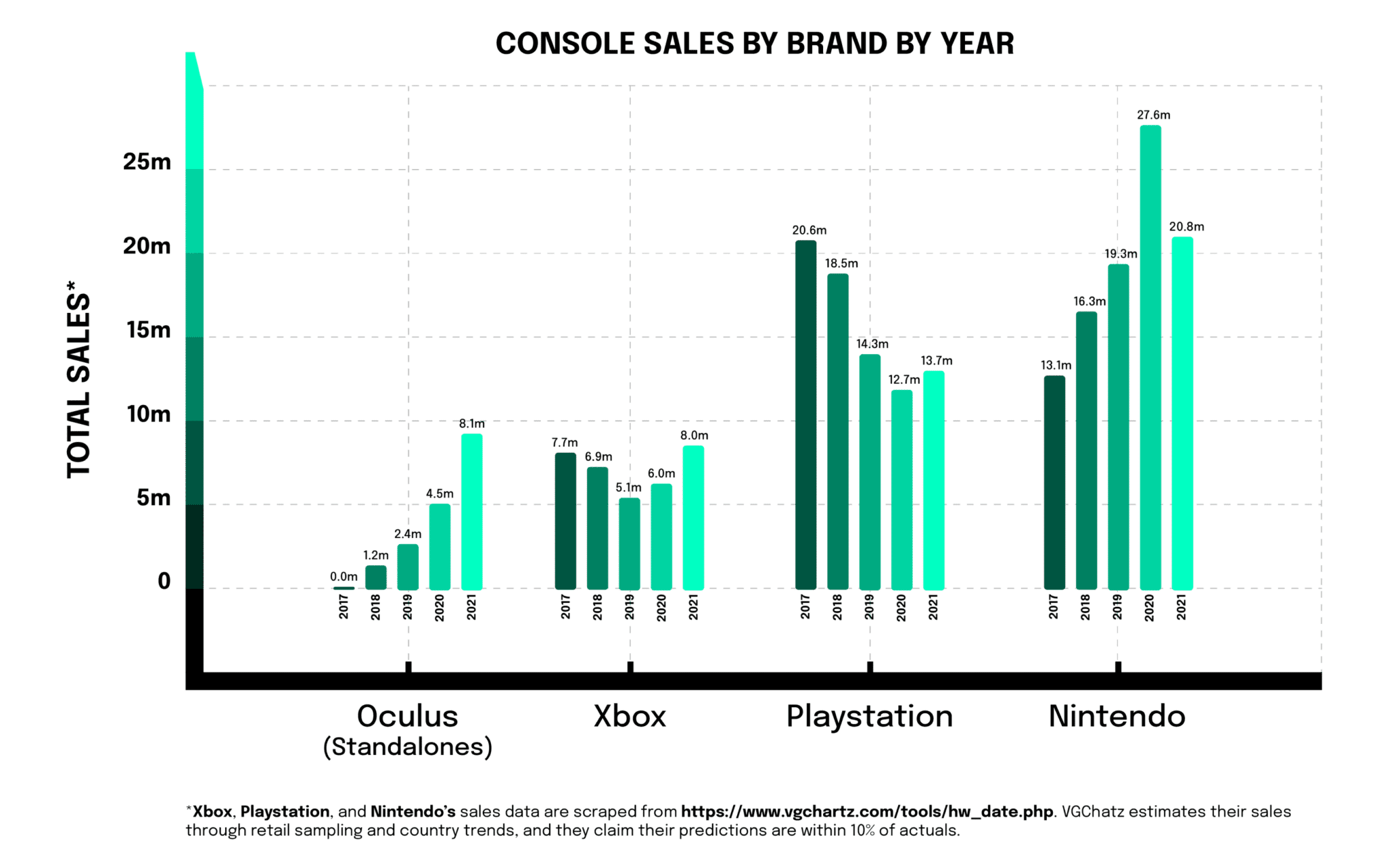
Augmented reality (AR) is not a new technology either. It was first introduced to the masses in 1957 as part of a science fiction film called “The Invisible Boy.” AR can be used to provide instructions or information by superimposing digital data onto an image of the physical world. Often this is done through a mobile or stationary device; think Google Glass, for example. There are two basic distinctions in the technical creation of augmented reality: AR can be implemented using either optical see-through (OST) or video see-through (VST) technologies.
An already established application example of the latest OST technologies today can be found in high-class cars. Arrows for navigation are displayed on the driver’s display, superimposed in real time over the road I am currently driving on. Another technological advance is Spatial Augmented Reality (SAR). With SAR, a projection device projects virtual information directly onto a pre-selected surface. This developmental step of AR is the most accessible to users because it does not require wearing or looking at special devices. SAR can be thought of as a projector that projects 3D holograms onto a surface. These holograms are already being used in museums around the world. Their future fields of application extend far beyond navigation, education or culture, but will initially involve high investments for real estate operators or providers.
All in all, VR and AR both offer entirely new ways to experience the digital world. They have the potential to fundamentally change some application areas. Both technologies are already being used daily in several industries, including education, healthcare, architecture and tourism, primarily in B2B contexts. It will be interesting to see if and how the adaptation of VR and AR in the B2C sector progresses and how long it will take to resolve some key optics and miniaturization issues.
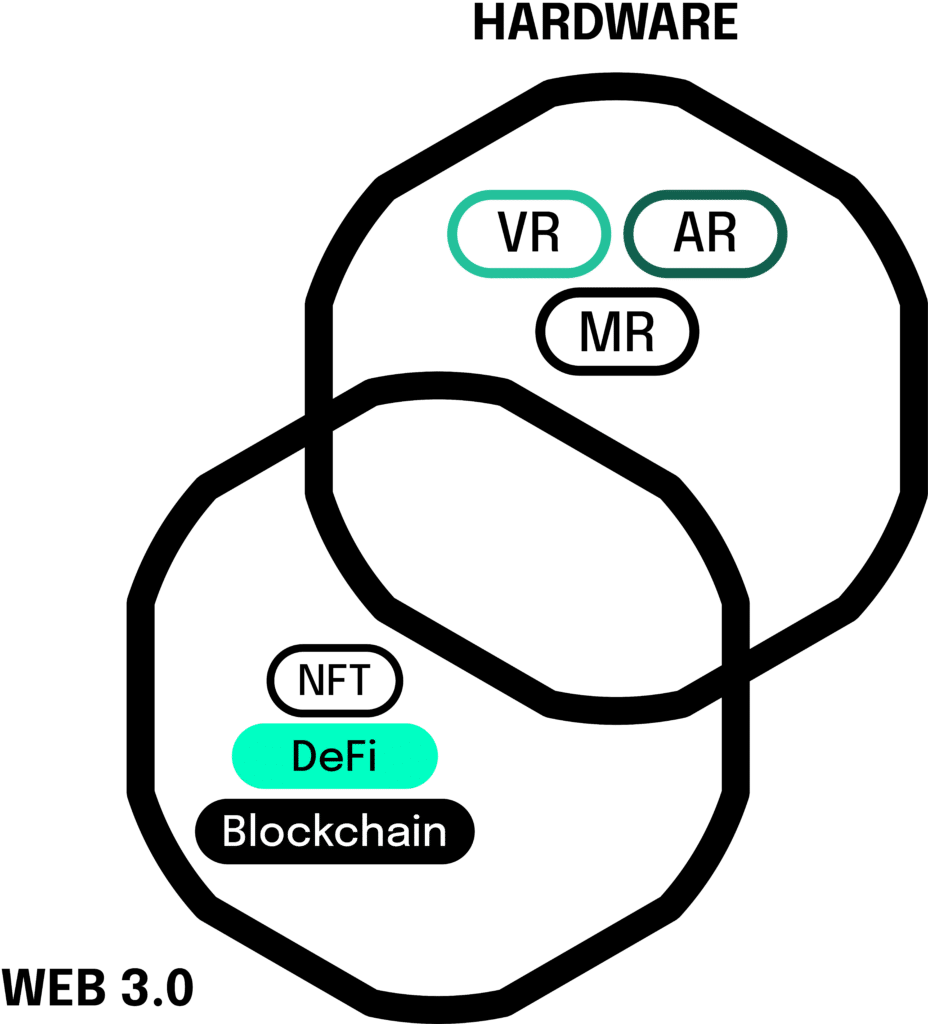
Metaverse - the Future of the Internet (?)
Let’s start with a one-sentence summary: The Metaverse is a shared, decentralized ecosystem. As you can already see from this definition, the term “decentralized” occurs here, which was a key theme of the entire article. The metaverse can be described as the realization of a combination of the technologies already mentioned. To expand the definition, we can equally describe the metaverse as a collective, virtual, shared space. This space is created by the convergence of augmented physical reality and virtual space. This includes the sum of all virtual worlds, augmented reality, and the Internet/Web 3.0.
The concept of the metaverse was first introduced in Neal Stephenson’s science fiction novel Snow Crash in 1992. The idea was to create a virtual reality that existed on the Internet and was accessible with VR headsets. Of course, this was a very daring vision 30 years ago in the Web 1.0 environment, but today it doesn’t seem far-fetched at all – especially when we think of the advances that have been made in the gaming industry lately. However, it is important to emphasize that the Metaverse is not just a game or a virtual world. It is a network of online spaces where people interact and share information, play games, learn and develop new skills, hold meetings, or just get together and relax.
Even if the Metaverse falls short of the fantastical visions created by science fiction writers, it will likely produce trillions in value as a new computing platform or content medium. But in its full vision, the Metaverse could be 1) the gateway to most digital experiences, 2) a key component of all physical as well as virtual experiences, and 3) the next great work platform. The Metaverse could provide economic growth similar to what the Internet did nearly 30 years ago. If, as envisioned by the Metaverse and Web 3.0 pioneers, each person is the true owner of the data they create, we will see profound economic changes and entirely new professions. Not only will metaverse companies emerge, but at the same time there will be a demand for, digital architect, content creator, web developer and many more. Already today, the most valuable companies are largely Internet companies. This is unlikely to change in the coming years, but the more interesting question is whether many of these Web 2.0 pioneers will make the leap to Web 3.0. Or whether Web 3.0 pioneers will outpace them.
We now have a rough idea of what the metaverse could one day be, what it could be used for, and how it interacts with other technologies. But unfortunately, it will be a while before the Metaverse materializes in its full form. Even Mark Zuckerberg admits that it could take another five to ten years for the metaverse to fully develop. Many of our current technologies, web protocols, and elements of technology infrastructure do not meet the demands placed on them by the Metaverse.
Powerful infrastructure: Basically, the metaverse as a virtual world needs a solid digital infrastructure so that millions of people can interact and be active in it. This infrastructure simply does not exist today. Intel, for example, postulates that a 1,000-fold increase in computing power is needed. Presently, large events like digital concerts in virtual worlds or in games like Fortnite are multiple mirrored instances of the same event rather than a shared experience. Many components of our current Web 2.0 were designed only to share information between different people, not to represent virtual worlds that mimic the physical one. Future infrastructure must enable the capacity of millions, if not billions, of people interacting with each other in real time. So, the technology must combine the best of videoconferencing and livestreaming. In addition, another problem is the excessive latency of today’s infrastructure, which could lead to distortions. For all these concerns and more, powerful new alternatives must first be developed to make the metaverse a reality as a fusion of virtuality and reality.
Standardized processes: Our Internet today functions only because of a variety of standardized protocols for visually representing web pages and content. The metaverse will require even more comprehensive and complex standards and protocols. Because of its decentralized nature, it will be difficult to reach consensus on issues such as data security, data persistence, future-compatible code development, and transactions. Because of the fundamental evolution of Web 3.0, there will need to be much more detailed rules on censorship, communication control, tax and accounting principles, and the prevention of hate speech and similar downsides of digital life!
Broad acceptance: As we have seen with social media platforms, search engines or streaming services, they only work because they are easily accessible. The metaverses under development will only achieve a high level of adoption if we as users develop a trust in the technology and the companies involved. Currently, it is a complicated process to get into a current “metaverse” more precisely a virtual world, quite complex. For example, to access Decentraland or The Sandbox, one needs digital wallets and to be able to buy things there, digital currencies. In addition, one’s Internet connection and computer must be modern to guarantee a good graphic display and low loading times. And for the full experience that many imagine, you would also need a VR or AR headset.
Obviously, the metaverse is not just a digital space, but its own world of connected spaces and digital economies. For an ecosystem to function and exchange goods, we need money as a form of medium of exchange. Metaverse platforms are designed to have a native currency that can be spent and earned as “Metaverse tokens.” The tokens can be thought of simply as a digital currency that has value and that facilitates the exchange of digital goods in the Metaverse. For example, one can buy NFTs from the Bored Ape Yacht Club, CloneX, etc. on platforms like OpenSea in exchange for cryptocurrencies such as Ether. Many virtual worlds today often (incorrectly) referred to as metaverses have their own native currencies In the Sandbox virtual world, for example, the token is called SAND, while in the Decentraland universe there is the currency MANA. In the future, it will be interesting to see how currencies and digital assets can be transported and exchanged across different virtual worlds or metaverses.
It’s been almost 30 years now since the idea of the metaverse was first mentioned in science fiction novels. We are closer today to realizing these bold ideas, but still the metaverse is in its infancy. It will take another 7-10 years for a full-scale metaverse to become a reality, as fundamental innovations in technological infrastructure are needed to provide a simultaneous live experience to so many people. So, as we understand it, the vision for the Metaverse is a combination of Web 3.0, DeFi technologies, cryptocurrencies, virtual and augmented reality, gaming elements, and existing virtual worlds. It will be interesting to see in the coming years in particular how the providers cooperate with each other and whether the transition between different metaverses is desired on their part (and thus takes account of the idea of Web 3.0) or whether this is not the case and the focus is rather on closed metaverses that are more reminiscent of the current Web 2.0.
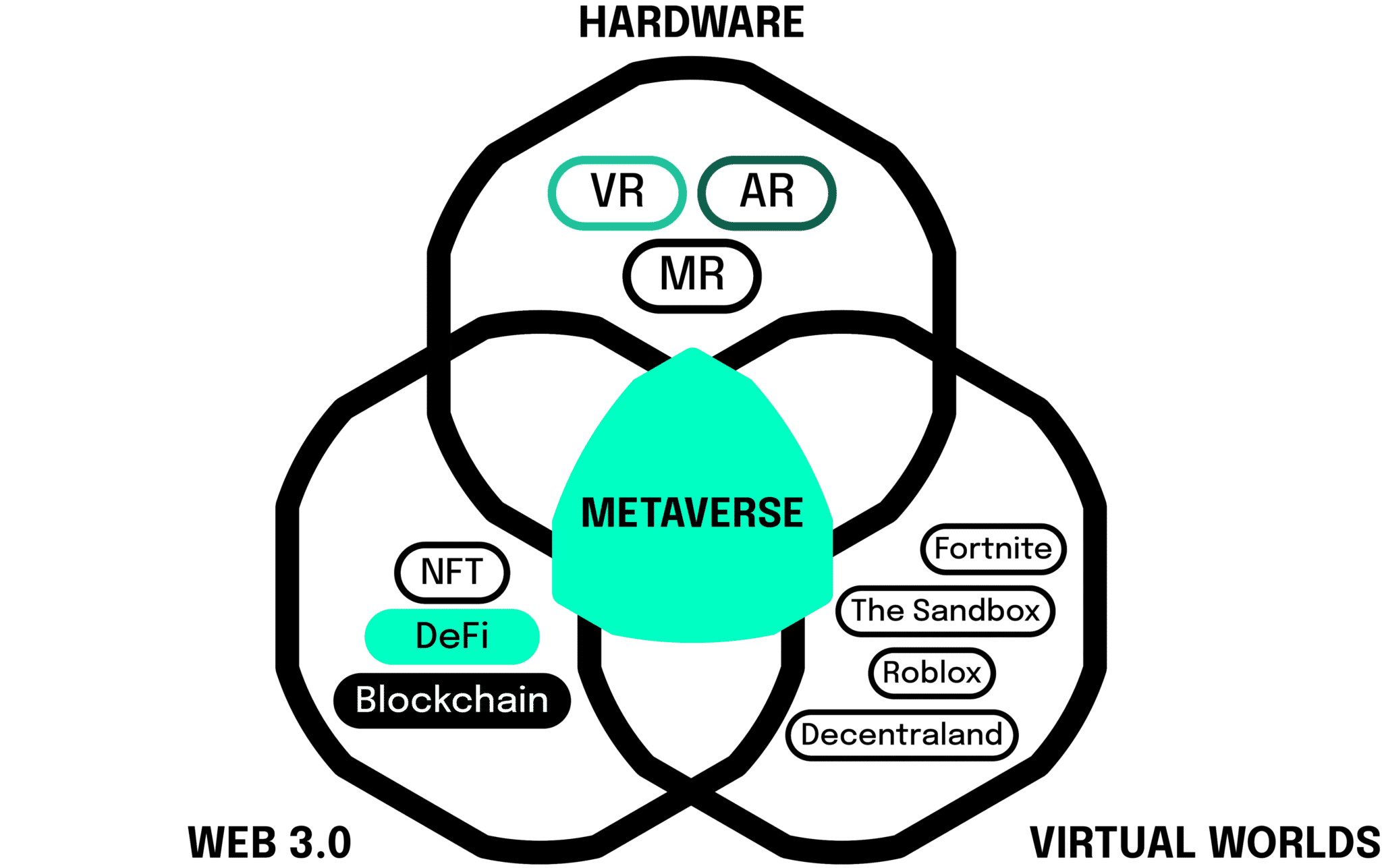
Learnings from this Article
Bored Ape Yacht Club. (2021, 1. Januar). Bored Ape Yacht Club. BAYC. Abgerufen am 21. März 2022, von https://boredapeyachtclub.com/#/home
Bunting, L., af Segerstad, Y. H. & Barendregt, W. (2021). Swedish teachers’ views on the use of personalised learning technologies for teaching children reading in the English classroom. International Journal of Child-Computer Interaction, 27, 100236. https://doi.org/10.1016/j.ijcci.2020.100236
Chalmers, D., Fisch, C., Matthews, R., Quinn, W. & Recker, J. (2022). Beyond the bubble: Will NFTs and digital proof of ownership empower creative industry entrepreneurs? Journal of Business Venturing Insights, 17, e00309. https://doi.org/10.1016/j.jbvi.2022.e00309
Cruz-Neira, C., Fernández, M. & Portalés, C. (2018). Virtual Reality and Games. Multimodal Technologies and Interaction, 2(1), 8. https://doi.org/10.3390/mti2010008
Davis, N. (2021, 11. März). Beeple | The First 5000 Days. Christies.Com. Abgerufen am 21. März 2022, von https://onlineonly.christies.com/s/beeple-first-5000-days/beeple-b-1981-1/112924
Feiner, S. K. (2002). Augmented Reality: A New Way of Seeing. Scientific American, 286(4), 48–55. https://doi.org/10.1038/scientificamerican0402-48
Fuchs, P., Moreau, G. & Guitton, P. (2011). Virtual Reality: Concepts and Technologies. Taylor & Francis.
Giustini, D. (2007). Web 3.0 and medicine. BMJ, 335(7633), 1273–1274. https://doi.org/10.1136/bmj.39428.494236.be
Hall, W., de Roure, D. & Shadbolt, N. (2008). The evolution of the Web and implications for eResearch. Philosophical Transactions of the Royal Society A: Mathematical, Physical and Engineering Sciences, 367(1890), 991–1001. https://doi.org/10.1098/rsta.2008.0252
Harvey, C. R., Ramachandran, A., Santoro, J., Ehrsam, F. & Buterin, V. (2021). DeFi and the Future of Finance (1. Aufl.). Wiley.
Jones, S. E. (2009). Second Life, Video Games, and the Social Text. PMLA/Publications of the Modern Language Association of America, 124(1), 264–272. https://doi.org/10.1632/pmla.2009.124.1.264
Kaczynski, S. & Duke Kominers, S. (2021, 19. November). How NFTs Create Value. Harvard Business Review. Abgerufen am 21. März 2022, von https://hbr.org/2021/11/how-nfts-create-value
Kurilovas, E., Kubilinskiene, S. & Dagiene, V. (2014). Web 3.0 – Based personalisation of learning objects in virtual learning environments. Computers in Human Behavior, 30, 654–662. https://doi.org/10.1016/j.chb.2013.07.039
Lawler, R. (2021, 14. Dezember). Nike just bought a virtual shoe company that makes NFTs and sneakers ‘for the metaverse’. The Verge. Abgerufen am 21. März 2022, von https://www.theverge.com/22833369/nike-rtfkt-nft-sneaker-shoe-metaverse-company
Meinel, C., Gayvoronskaya, T. & Schnjakin, M. (2018). Blockchain. Deutscher Universitätsverlag.
Narciedies, D. K. & Law, J. (2021). Money and Trade Considered (Annotated): With a Proposal for Supplying the Nation with Money. Independently published.
Newitz, A. (2008). Web 3.0. New Scientist, 197(2647), 42–43. https://doi.org/10.1016/s0262-4079(08)60674-0
Newman, R., Chang, V., Walters, R. J. & Wills, G. B. (2016). Web 2.0—The past and the future. International Journal of Information Management, 36(4), 591–598. https://doi.org/10.1016/j.ijinfomgt.2016.03.010
Piper, K. (2020, 11. September). How M-Pesa, Kenya’s mobile money banking, transformed the lives of the poor. Vox. Abgerufen am 22. März 2022, von https://www.vox.com/future-perfect/21420357/kenya-mobile-banking-unbanked-cellphone-money
Ragnedda, M. & Destefanis, G. (2019). Blockchain and Web 3.0. Routledge.
Rupprecht, P., Kueffner-McCauley, H., Trimmel, M. & Schlund, S. (2021). Adaptive Spatial Augmented Reality for Industrial Site Assembly. Procedia CIRP, 104, 405–410. https://doi.org/10.1016/j.procir.2021.11.068
Satrio Wicaksono, M. G., Suryani, E. & Hendrawan, R. A. (2022). Increasing productivity of rice plants based on IoT (Internet Of Things) to realize Smart Agriculture using System Thinking approach. Procedia Computer Science, 197, 607–616. https://doi.org/10.1016/j.procs.2021.12.179
Saxena, N. & Varshney, D. (2021). Smart Home Security Solutions using Facial Authentication and Speaker Recognition through Artificial Neural Networks. International Journal of Cognitive Computing in Engineering, 2, 154–164. https://doi.org/10.1016/j.ijcce.2021.10.001
Scherk, J. & Pöchhacker-Tröscher, G. (2017). Die Blockchain – Technologiefeld und wirtschaftliche Anwendungsbereiche. BMVIT.
Stokel-Walker, C. (2022). Welcome to the metaverse. New Scientist, 253(3368), 39–43. https://doi.org/10.1016/s0262-4079(22)00018-5
Stübl, G., Ebenhofer, G., Bauer, H. & Pichler, A. (2022). Lessons Learned from Industrial Augmented Reality Applications. Procedia Computer Science, 200, 1218–1226. https://doi.org/10.1016/j.procs.2022.01.322
Swan, M. (2014). Blockchain: Blueprint for a New Economy. O’Reilly Media.
Swanstrom, L. (2018). Science Fiction and the Digital Humanities. Science Fiction Studies, 45(3), 642. https://doi.org/10.5621/sciefictstud.45.3.0642
Szabo, N. (1997). Formalizing and Securing Relationships on Public Networks. First Monday, 2(9). https://doi.org/10.5210/fm.v2i9.548
The Week. (2022, 1. März). The world’s most valuable companies. The Week UK. Abgerufen am 20. März 2022, von https://www.theweek.co.uk/business/companies/955282/worlds-most-valuable-companies
Vidal-Tomás, D. (2022). The new crypto niche: NFTs, play-to-earn, and metaverse tokens. Finance Research Letters, 102742. https://doi.org/10.1016/j.frl.2022.102742
Wilkens, R. & Falk, R. (2019). Smart Contracts: Grundlagen, Anwendungsfelder und rechtliche Aspekte (essentials) (1. Aufl. 2019 Aufl.). Springer Gabler.
Zhou, X. (2020). Wearable health monitoring system based on human motion state recognition. Computer Communications, 150, 62–71. https://doi.org/10.1016/j.comcom.2019.11.008
neosfer GmbH
Eschersheimer Landstr 6
60322 Frankfurt am Main
Teil der Commerzbank Gruppe
+49 69 71 91 38 7 – 0 info@neosfer.de presse@neosfer.de bewerbung@neosfer.de

